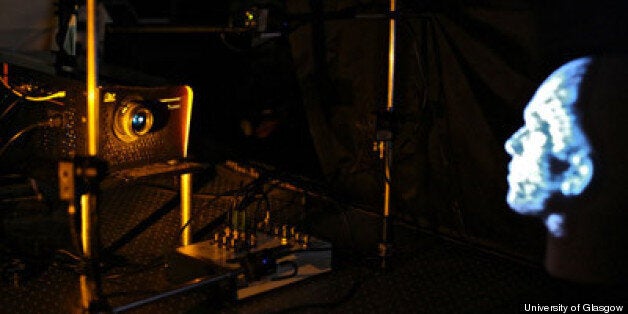
A new method of producing 3D images could improve cancer screening tests, scientists have said.
The technology uses four single-pixel detectors and has been developed at University of Glasgow's physics and astronomy department.
It allows for the creation of 3D pictures without expensive digital cameras.
The technique is called 3D computational imaging, or ghost imaging, and can detect wavelengths that digital cameras cannot pick up.
It could be used to look under the skin to detect cancer or other medical conditions quickly.
Oil industry firms could also use the technology to detect gases hidden from the naked eye that leak from the ground near oil wells.
Professor Miles Padgett, Kelvin Chair of Natural Philosophy at the university, said:
"Single-pixel detectors in four different locations are used to detect light from a data projector which illuminates objects with a rapidly shifting sequence of black-and-white patterns similar to crossword puzzles.
"Four detectors give images, each of which contain shadows, giving us clues about the 3D shape of the object. Combining the four images using a well-known technique known as shape-from-shade allows us to create a full 3D image of the object."
Details of the discovery appear in a report entitled 3D Computational Imaging With Single-Pixel Detectors in the current Science journal.
Research assistant Matthew Edgar, who contributed to the paper, said:
"A more portable version of the system could be created quite easily, making it much more practical to use outside the lab. It could be used to look for the tell-tale gases which leak from the ground where oil can be found, for example, or it could be tuned into the terahertz range to probe just below the skin to search for tumours or other medical conditions."
The technology is in its early stages and commercial partners are being sought to help develop it.
Baoqing Sun, lead author of the paper, said: "This means that single-pixel detectors which cost just a few pounds each are now capable of producing images across a far wider spectrum than 3D imaging systems currently on the market which cost tens of thousands of pounds."